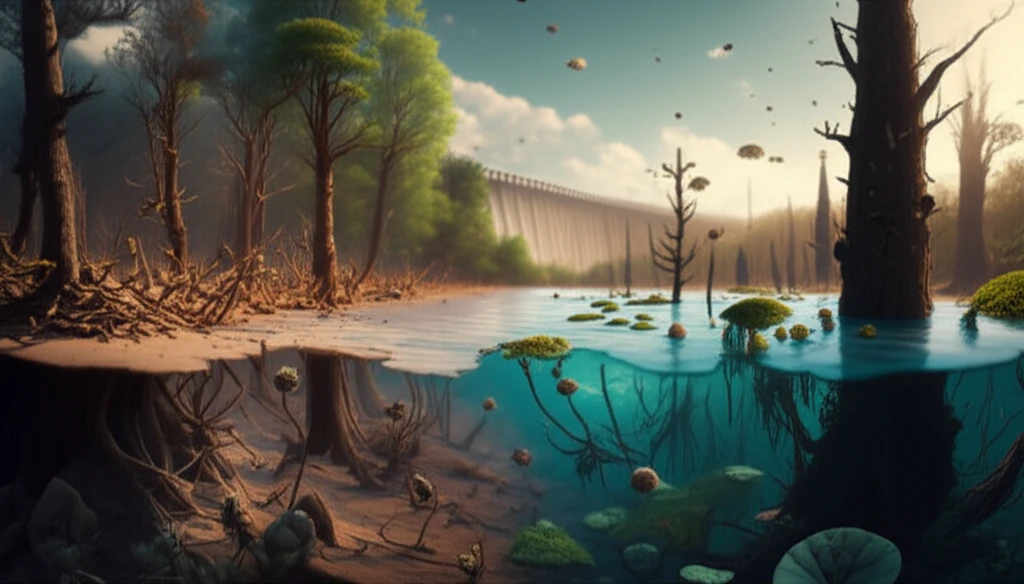
How Dams Reshape Dry Forests: Lessons from a 15-Year Study
"Uncover the surprising impacts of artificial reservoirs on plant life and ecosystem balance in dry forests, and what this means for environmental conservation."
Dams are vital for water management and hydroelectric power, yet their environmental consequences extend far beyond the immediate areas of inundation. While the direct effects of dams are well-documented, the subtle and long-term impacts on surrounding ecosystems often go unnoticed. One such ecosystem is the dry forest, known for its unique adaptations to seasonal water scarcity.
Dry forests, with their characteristic deciduous trees and specialized seed dispersal mechanisms, face a unique threat from the creation of artificial reservoirs. These reservoirs, while providing water and energy, can disrupt the delicate balance of these ecosystems by altering water availability and soil conditions in adjacent areas.
A recent 15-year study investigated how an artificial reservoir affected the floristic diversity and plant functional traits of a dry forest in Brazil. The findings reveal significant shifts in plant communities, challenging previous assumptions about the localized impact of dams and highlighting the need for a broader perspective on environmental conservation.
The Ripple Effect: How Dams Transform Plant Communities

The research focused on a dry forest impacted by the Miranda Hydroelectric Power Plant in Southeast Brazil. Scientists compared two sectors of the forest: one close to the reservoir's edge and another farther away, analyzing various factors such as tree density, species diversity, basal area, and key functional traits like leaf deciduousness and seed dispersal mechanisms.
- Higher basal area and tree density: Suggesting increased water availability reduced the stress of the dry season, promoting growth.
- Increased evergreen trees and zoochoric seed dispersal: Indicating a shift towards species adapted to more humid conditions, with animals playing a greater role in seed dispersal.
- Lower Shannon's diversity index: Revealing a decrease in overall species diversity compared to areas farther from the reservoir.
A Call for Broader Environmental Assessments
This study underscores the far-reaching consequences of dam construction on plant ecosystems. The changes observed in the dry forest's structure and function demonstrate that the impacts of artificial reservoirs extend well beyond the flooded areas.
The shift towards zoochoric dispersal and evergreen species suggests a fundamental alteration of the forest's ecological processes, potentially affecting long-term resilience and stability.
These findings emphasize the need for comprehensive environmental assessments that consider the broader ecological context when planning and evaluating dam projects. Recognizing and mitigating these indirect impacts is crucial for effective conservation and sustainable water resource management.
